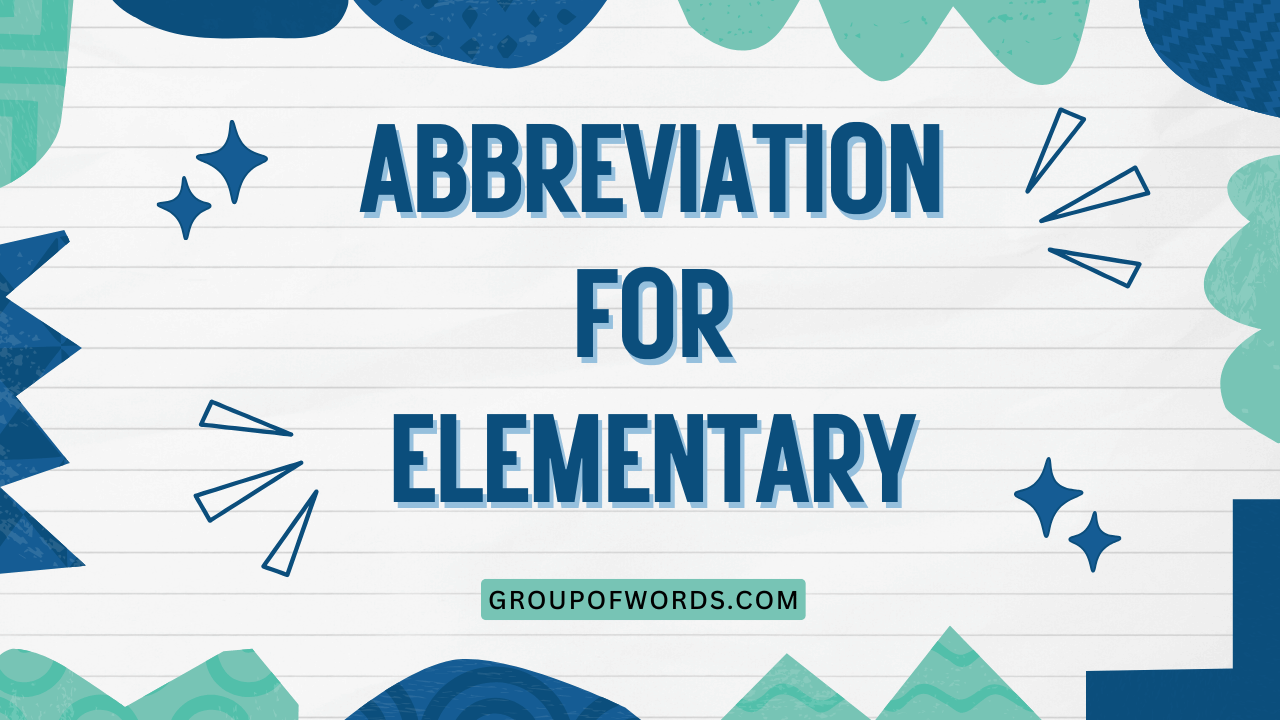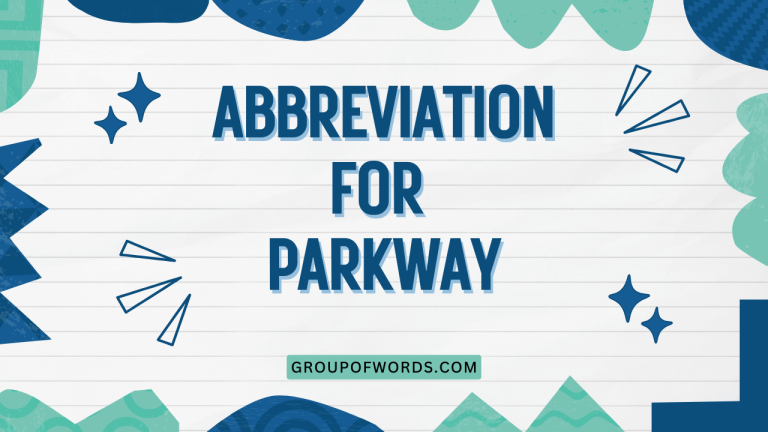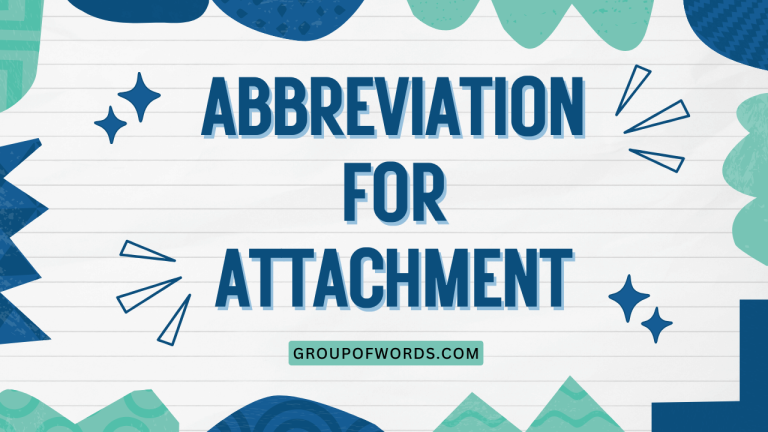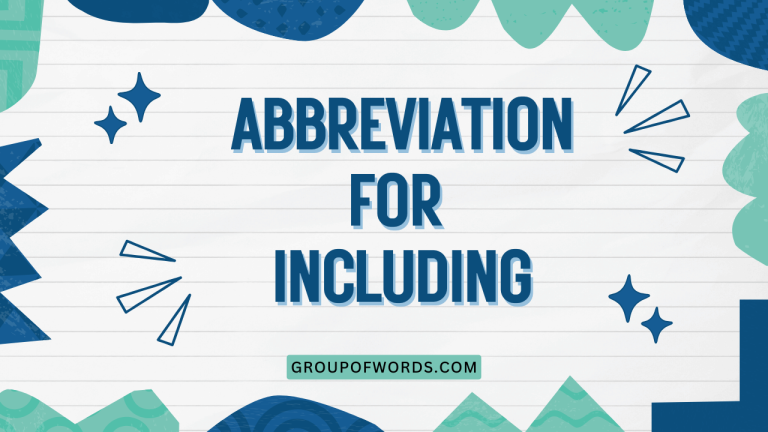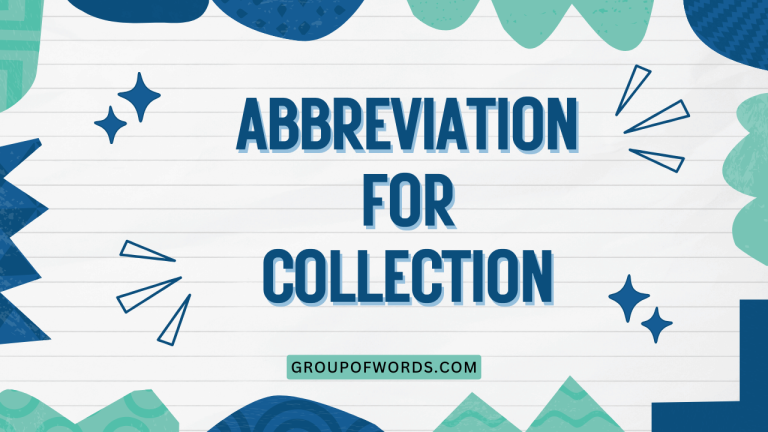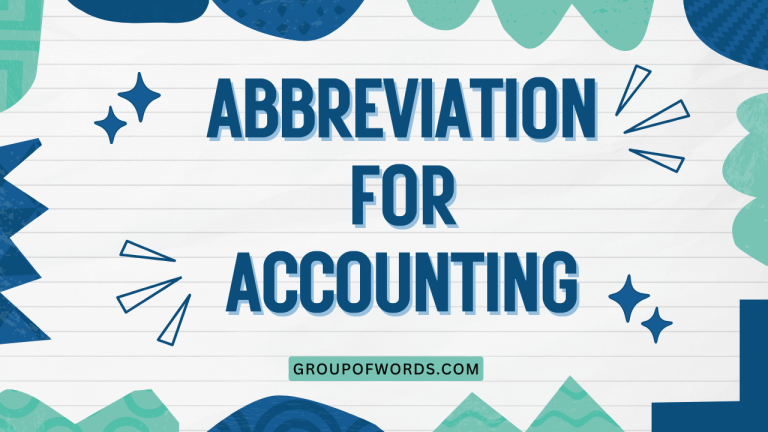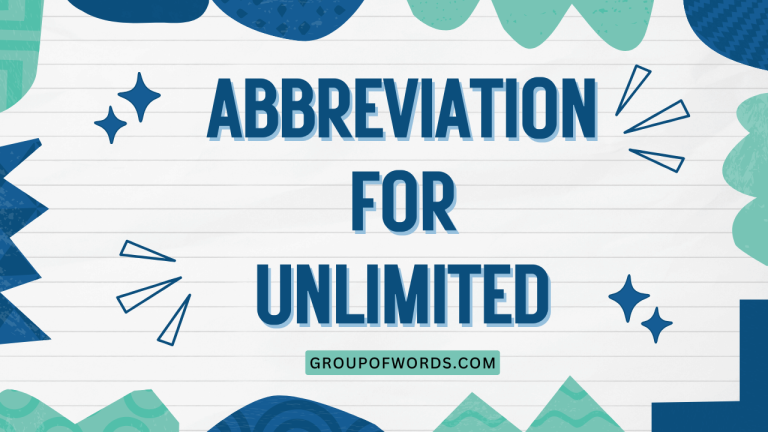Abbreviation for Elementary: A Comprehensive Guide
Understanding abbreviations is crucial for efficient communication, especially in educational contexts. The abbreviation for “elementary” is a common one, used in various settings from school schedules to academic research.
This article provides a comprehensive guide to the abbreviation of “elementary,” covering its definition, usage, common mistakes, and more. Whether you’re a student, teacher, or simply someone interested in improving your English grammar, this guide will equip you with the knowledge and skills to use this abbreviation correctly and confidently.
Table of Contents
- Introduction
- Definition of Elementary and Its Abbreviation
- Structural Breakdown of the Abbreviation
- Types of Contexts Where the Abbreviation is Used
- Examples of Abbreviation Usage
- Usage Rules for the Abbreviation
- Common Mistakes When Using the Abbreviation
- Practice Exercises
- Advanced Topics: Nuances and Exceptions
- Frequently Asked Questions
- Conclusion
Introduction
Abbreviations are shortened forms of words or phrases, used to save space and time. In academic and professional environments, knowing the correct abbreviations is essential for clear and concise communication.
The term “elementary,” referring to the initial stages of education, is frequently abbreviated. This article aims to provide a thorough understanding of the abbreviation for “elementary,” ensuring its proper use in various contexts.
This guide is suitable for students, educators, and anyone seeking to enhance their understanding of English grammar and writing conventions.
Definition of Elementary and Its Abbreviation
The word “elementary” describes something that is basic, fundamental, or in the early stages of development. In the context of education, “elementary” refers to the first level of schooling, typically following preschool and preceding middle school or junior high school. The most common abbreviation for “elementary” is “elem.” This abbreviation is widely recognized and accepted in academic, administrative, and informal settings. It’s important to note that while other variations might exist, “elem.” is the standard and most universally understood form.
The term “elementary” carries the connotation of foundational knowledge and skills. It signifies the initial building blocks upon which further learning is constructed.
Understanding this foundational aspect helps to appreciate the significance of using the abbreviation correctly, as it often refers to these crucial early years of education. The abbreviation serves as a shorthand way to reference this critical period without sacrificing clarity.
The abbreviation is appropriate for use in documents that have space constraints, such as tables, lists, or short notes.
Structural Breakdown of the Abbreviation
The abbreviation “elem.” is derived from the first four letters of the word “elementary.” This is a common method for creating abbreviations, especially for longer words. The period at the end of “elem.” is crucial because it signifies that the word has been shortened.
Without the period, “elem” could be misinterpreted as a different word or a misspelling. The abbreviation maintains the core phonetic sound of the original word, making it easily recognizable.
The use of the period is a standard convention in English abbreviations.
The abbreviation consists of the following characters: ‘e’, ‘l’, ‘e’, ‘m’, and ‘.’. Each character plays a specific role in conveying the meaning of the full word.
The first three letters, ‘e’, ‘l’, ‘e’, immediately signal the connection to “elementary”. The ‘m’ completes the recognizable stem.
The final period is not part of the word itself, but a punctuation mark that indicates abbreviation, signaling to the reader that there are missing letters and the word is not complete.
Types of Contexts Where the Abbreviation is Used
The abbreviation “elem.” is used in a variety of contexts, primarily where space is limited or where the term is frequently referenced. Understanding these contexts helps in using the abbreviation appropriately.
Educational Settings
In school schedules, report cards, and other administrative documents, “elem.” is frequently used to refer to elementary schools or grades. It helps to save space and maintain clarity in these documents.
For example, a school schedule might list “Elem. Math” to indicate elementary-level mathematics classes.
Academic Research
In research papers or studies focusing on elementary education, “elem.” can be used in tables, charts, or appendices to refer to elementary-level data or participants. This is particularly useful when dealing with large datasets or when space is a constraint in the publication.
Informal Communication
In informal notes, emails, or conversations among educators or parents, “elem.” can be used as a shorthand way to refer to elementary school or grades. However, it’s important to consider the audience and ensure that they understand the abbreviation.
Directories and Listings
School directories or listings often use “elem.” to indicate that a particular school is an elementary school. This is common in both online and print directories, helping users quickly identify the type of school.
Software and Databases
In educational software or databases, “elem.” may be used as a field label or category to classify data related to elementary education. This ensures consistency and efficiency in data management.
Examples of Abbreviation Usage
Here are several examples illustrating the use of “elem.” in various contexts. These examples are categorized to provide a clear understanding of how the abbreviation is applied in different situations.
Examples in Educational Settings
The following table shows examples of “elem.” being used in different educational settings, such as school schedules, report cards, and administrative documents. These examples further illustrate the practical usage of the abbreviation.
| Context | Example Sentence |
|---|---|
| School Schedule | The schedule indicates “Elem. Reading” at 9:00 AM. |
| Report Card | The student received an A in Elem. Science. |
| Administrative Document | The memo stated, “All Elem. teachers must attend the meeting.” |
| Classroom Sign | The sign read: “Welcome to Elem. Art!” |
| School Newsletter | The newsletter announced the Elem. School Spring Fair. |
| Teacher’s Notes | Her notes included a reminder to grade Elem. Math homework. |
| Curriculum Guide | The curriculum guide outlines the goals for Elem. Social Studies. |
| Parent-Teacher Conference | “We need to discuss your child’s progress in Elem. Language Arts,” the teacher said. |
| School Website | The school website has a dedicated page for Elem. students and parents. |
| Student Handbook | The student handbook describes the Elem. school rules and regulations. |
| Teacher’s Email | The email said, “Please submit your Elem. lesson plans by Friday.” |
| School Calendar | The school calendar marks the dates for Elem. school events. |
| Principal’s Message | The principal’s message highlighted achievements in Elem. education. |
| Guidance Counselor’s Note | The guidance counselor provided resources for Elem. students needing extra support. |
| Classroom Assignment | The assignment was labeled “Elem. Writing Prompt.” |
| School Policy | The school policy addresses the needs of Elem. learners. |
| Staff Meeting Agenda | The agenda included a discussion on Elem. curriculum updates. |
| Professional Development Workshop | The workshop focused on strategies for teaching Elem. reading. |
| School Budget | The school budget allocated funds for Elem. resources and programs. |
| Volunteer Sign-Up Sheet | The sign-up sheet was for volunteers to help with Elem. school activities. |
| Classroom Library Label | The classroom library section was labeled “Elem. Readers.” |
| School Supply List | The school supply list included items needed for Elem. classes. |
| Field Trip Permission Slip | The permission slip was for a field trip for Elem. students. |
Examples in Academic Research
This table provides examples of how “elem.” is used in academic research papers and studies, particularly when referring to elementary-level data or participants. These examples show the formal and precise application of the abbreviation.
| Context | Example Sentence |
|---|---|
| Research Paper | The study focused on the reading comprehension of Elem. students. |
| Data Analysis | The data showed a correlation between attendance and grades in Elem. math. |
| Appendix | See Appendix A for a list of participating Elem. schools. |
| Study Abstract | The abstract summarized the findings on Elem. literacy programs. |
| Research Proposal | The research proposal outlined the methodology for studying Elem. science education. |
| Literature Review | The literature review examined existing research on Elem. curriculum development. |
| Presentation Slides | The presentation slides included charts comparing Elem. and middle school performance. |
| Conference Paper | The conference paper presented new strategies for teaching Elem. writing. |
| Journal Article | The journal article explored the impact of technology on Elem. learning. |
| Dissertation | The dissertation investigated the effectiveness of Elem. intervention programs. |
| Research Report | The research report documented the outcomes of Elem. education reforms. |
| Statistical Analysis | The statistical analysis compared the academic progress of Elem. students in different districts. |
| Methodology Section | The methodology section described the sample of Elem. participants. |
| Findings Section | The findings section reported significant improvements in Elem. reading scores. |
| Discussion Section | The discussion section interpreted the implications of the research for Elem. education policy. |
| Abstract | The abstract highlighted the study’s contribution to understanding Elem. learning. |
| Introduction Section | The introduction section provided background information on Elem. school challenges. |
| Conclusion Section | The conclusion section summarized the key findings and recommendations for Elem. teachers. |
| Grant Proposal | The grant proposal requested funding for Elem. education initiatives. |
| Evaluation Report | The evaluation report assessed the impact of Elem. programs on student outcomes. |
| Research Design | The research design involved a longitudinal study of Elem. students. |
| Data Collection | The data collection methods included surveys of Elem. teachers and parents. |
| Ethical Considerations | The ethical considerations addressed the protection of Elem. student privacy. |
Examples in Informal Communication
The following table shows examples of “elem.” being used in informal communication, such as notes, emails, and conversations among educators or parents. These examples illustrate the casual yet informative use of the abbreviation.
| Context | Example Sentence |
|---|---|
| “Don’t forget the Elem. school play next week!” | |
| Note to Teacher | “My child is struggling with Elem. math.” |
| Conversation | “Are you volunteering at the Elem. fair this year?” |
| Text Message | “Elem. school pick-up is at 3 PM.” |
| Parent Group Chat | “Any updates on the Elem. fundraiser?” |
| Teacher’s Lounge Conversation | “We need to plan the Elem. graduation ceremony.” |
| Informal Memo | “Please review the Elem. safety guidelines.” |
| Quick Note | “Reminder: Elem. field trip tomorrow.” |
| Teacher’s Email | “Let’s collaborate on Elem. lesson planning.” |
| Parent’s Email | “I’d like to discuss my child’s Elem. reading progress.” |
| Staff Room Chat | “The Elem. school is getting new computers.” |
| Volunteer Request | “Volunteers needed for Elem. reading program.” |
| Classroom Announcement | “Important info about the Elem. science project.” |
| Parent-Teacher Email | “Seeking feedback on Elem. homework assignments.” |
| School Event Reminder | “Don’t miss the Elem. talent show this Friday!” |
| Teacher’s Reminder | “Update: Elem. curriculum changes next term.” |
| Informal Discussion | “How can we improve the Elem. school’s resources?” |
| Parent’s Question | “What’s the best way to support Elem. learning at home?” |
| School Update | “The Elem. school is celebrating its anniversary.” |
| Teacher’s Reflection | “Reflecting on successful Elem. teaching strategies.” |
Usage Rules for the Abbreviation
Using “elem.” correctly involves adhering to specific rules. These rules ensure consistency and clarity in written communication.
Rule 1: Always Use a Period
Always include a period after “elem.” to indicate that it is an abbreviation. This is a standard convention in English and helps to avoid confusion.
Rule 2: Capitalization
Capitalize “Elem.” at the beginning of a sentence or in titles, just as you would with the full word “Elementary.” In other cases, use lowercase “elem.” unless it’s part of a proper noun or title.
Rule 3: Context Appropriateness
Use “elem.” in contexts where abbreviations are acceptable and common, such as schedules, reports, and informal communications. Avoid using it in formal essays or documents where full words are preferred for clarity.
Rule 4: Consistency
Maintain consistency within a document. If you use “elem.” at one point, continue to use it throughout the document, unless there’s a specific reason to switch to the full word.
Rule 5: Audience Awareness
Consider your audience. If you’re unsure whether your audience will understand the abbreviation, it’s best to use the full word “elementary” to ensure clarity.
Common Mistakes When Using the Abbreviation
Even with a clear understanding of the rules, common mistakes can occur when using “elem.” Being aware of these mistakes can help you avoid them.
Mistake 1: Forgetting the Period
Incorrect: The schedule lists Elem Reading at 9:00 AM.
Correct: The schedule lists Elem. Reading at 9:00 AM.
Explanation: The period is essential to indicate that “Elem” is an abbreviation.
Mistake 2: Incorrect Capitalization
Incorrect: The student is in elem. school.
Correct: The student is in elem. school.
Also Correct: The student is in Elem. school (if part of a title or proper noun).
Explanation: Capitalize at the beginning of a sentence or within a title.
Mistake 3: Using in Formal Writing
Incorrect: The elem. curriculum is designed to build foundational skills.
Correct: The elementary curriculum is designed to build foundational skills.
Explanation: In formal writing, it’s generally better to use the full word “elementary.”
Mistake 4: Inconsistency
Inconsistent: The report includes data from elementary and elem. schools.
Consistent: The report includes data from elementary and elementary schools.
Also Consistent: The report includes data from elem. and elem. schools.
Explanation: Maintain consistency in your use of abbreviations.
Mistake 5: Assuming Understanding
Potentially Confusing: The Elem. program needs more funding. (Without prior context)
Clearer: The Elementary program needs more funding. (Especially in initial references)
Explanation: Ensure your audience understands the abbreviation, especially in initial references.
Practice Exercises
Test your understanding of the abbreviation “elem.” with these practice exercises. Each exercise focuses on different aspects of its usage.
Exercise 1: Correct the Sentences
Correct the following sentences to use the abbreviation “elem.” properly.
| Question | Answer |
|---|---|
| 1. The elementary school starts at 8:00 AM. | The elem. school starts at 8:00 AM. |
| 2. She teaches science at the elem school. | She teaches science at the elem. school. |
| 3. All teachers must attend the elementary meeting. | All elem. teachers must attend the meeting. |
| 4. The school offers a great elementary program. | The school offers a great elem. program. |
| 5. He is enrolled in elementary music class. | He is enrolled in elem. music class. |
| 6. The report card showed progress in elementary reading. | The report card showed progress in elem. reading. |
| 7. The school newsletter announced the elementary school fair. | The school newsletter announced the elem. school fair. |
| 8. The principal sent a message to all elementary parents. | The principal sent a message to all elem. parents. |
| 9. The curriculum guide includes elementary math standards. | The curriculum guide includes elem. math standards. |
| 10. Volunteers are needed for the elementary reading program. | Volunteers are needed for the elem. reading program. |
Exercise 2: Fill in the Blanks
Fill in the blanks with the correct abbreviation “elem.” or the full word “elementary,” depending on the context.
| Question | Answer |
|---|---|
| 1. The _______ school is hosting a science fair. | elem. |
| 2. In formal writing, it’s better to use the full word _______. | elementary |
| 3. The schedule lists _______ Art at 10:00 AM. | Elem. |
| 4. Make sure to capitalize _______ at the beginning of a sentence. | Elem. |
| 5. The research focused on the reading skills of _______ students. | elem. |
| 6. She is a teacher at the local _______ school. | elem. |
| 7. The _______ curriculum is designed to build foundational skills. | elementary |
| 8. The school district is reviewing the _______ education policies. | elementary |
| 9. Sign up for the _______ school volunteer program. | elem. |
| 10. The _______ school play will be performed next week. | elem. |
Exercise 3: Multiple Choice
Choose the correct sentence from the options provided.
| Question | Answer |
|---|---|
| 1. Which sentence is correct? a) The Elem school is new. b) The Elem. school is new. c) The elem school is new. |
b) The Elem. school is new. |
| 2. Which sentence is correct? a) He teaches elem.. b) He teaches elementary. c) He teaches Elem. |
b) He teaches elementary. |
| 3. Which sentence is correct? a) All elem teachers attended. b) All elem. teachers attended. c) All Elementary teachers attended. |
b) All elem. teachers attended. |
| 4. Which sentence is correct? a) The report is on Elem.. schools. b) The report is on Elementary schools. c) The report is on elem schools.. |
b) The report is on Elementary schools. |
| 5. Which sentence is correct? a) The students are in elem.. b) The students are in elementary. c) The students are in Elem. |
b) The students are in elementary. |
| 6. Which sentence is correct? a) Elem. students need support. b) Elementary students need support. c) elem students need support. |
b) Elementary students need support. |
| 7. Which sentence is correct? a) Visit the Elem website. b) Visit the elem. website. c) Visit the Elementary website. |
c) Visit the Elementary website. |
| 8. Which sentence is correct? a) Elem is important. b) Elem. is important. c) Elementary is important. |
c) Elementary is important. |
| 9. Which sentence is correct? a) The focus is elem reading.. b) The focus is elem. reading. c) The focus is elementary reading. |
c) The focus is elementary reading. |
| 10. Which sentence is correct? a) He studies elem.. science. b) He studies elem. science. c) He studies Elementary science. |
b) He studies elem. science. |
Advanced Topics: Nuances and Exceptions
While the basic rules for using “elem.” are straightforward, there are some nuances and exceptions to consider for more advanced usage. These include regional differences and specific style guide preferences.
Regional Differences
In some regions or countries, alternative abbreviations might be used, although “elem.” is generally the most widely recognized. Be aware of regional conventions and adapt your usage accordingly.
Style Guide Preferences
Different style guides (such as APA, MLA, or Chicago) may have specific rules regarding the use of abbreviations. Consult the relevant style guide for guidance on when and how to use “elem.” in academic writing.
Formal vs. Informal Contexts
While “elem.” is acceptable in many contexts, it’s generally best to use the full word “elementary” in highly formal documents, such as official reports or legal documents. The level of formality should guide your choice.
Clarity and Conciseness
When deciding whether to use “elem.” or “elementary,” consider the balance between clarity and conciseness. If using the abbreviation might cause confusion, it’s better to use the full word, even if it takes up more space.
Frequently Asked Questions
Here are some frequently asked questions about the abbreviation “elem.”
- Is it always necessary to use a period after “elem.”?
Yes, the period is essential. It indicates that “elem.” is an abbreviation and not a complete word. Omitting the period can lead to confusion and is grammatically incorrect.
- Can I use “elem” in a formal essay?
It’s generally not recommended to use “elem.” in formal essays. In formal writing, it’s better to use the full word “elementary” to maintain a professional tone and ensure clarity.
- Is “elem” capitalized at the beginning of a sentence?
Yes, “Elem.” should be capitalized at the beginning of a sentence, just like any other word. Similarly, it should be capitalized in titles or headings.
- Are there other abbreviations for “elementary”?
While “elem.” is the most common and widely recognized abbreviation, other variations might exist. However, “elem.” is the standard and should be preferred unless there’s a specific reason to use a different abbreviation.
- When should I use the full word “elementary” instead of “elem.”?
Use the full word “elementary” in formal writing, when addressing an audience that may not be familiar with the abbreviation, or when clarity is paramount. In contexts where space is limited or the term is frequently repeated, “elem.” is appropriate.
- Is it appropriate to use “elem.” in conversation?
Yes, it is acceptable to use “elem.” in casual conversations among educators or parents who are familiar with the abbreviation. However, in more formal or general conversations, it’s better to use the full word “elementary” to ensure everyone understands.
- How do style guides treat the abbreviation “elem.”?
Different style guides (APA, MLA, Chicago) may have specific rules regarding abbreviations. Consult the relevant style guide for detailed information. Generally, they recommend using abbreviations sparingly in formal writing and providing the full word on first use, followed by the abbreviation in parentheses if you plan to use it frequently.
- What if I’m unsure whether my audience will understand “elem.”?
If you’re unsure whether your audience will understand the abbreviation, it’s always best to use the full word “elementary.” Clarity should always be the priority in communication.
Conclusion
Mastering the abbreviation “elem.” is a valuable skill for anyone involved in education or academic writing. By understanding its definition, usage rules, and common mistakes, you can use it correctly and confidently in various contexts.
Remember to always include the period, consider your audience, and maintain consistency in your writing. This guide has provided you with the knowledge and practice exercises needed to effectively use the abbreviation “elem.” and improve your overall communication skills.
Continue to practice and refine your understanding to ensure accurate and professional use in all your written and verbal communications.
